Material - It's all around us
Greetings Steemians! It gives me great pleasure to be writing again and I hope you have been gaining a lot through my writing, Like I will always say, please ensure to give me your feedback. Thanks!
Today, I want us to look at an important aspect not just in engineering but which cuts across all ramification. Maybe I should share my story first to make things exciting.
I have misplaced my debit card twice in the space of three months and now I have done it again. I feel like I should be entitled to the Guinness book of record in the category of the “most lost debit card”. Please don’t laugh because I am pained.
Well, what choice do I have other than to get a replacement? I decided to pursue this course on friday morning and I went to the bank. I woke up on the cold tile (the heat was just too much overnight) and hopped into the bathroom. My toothpaste is a fluoride based one like most toothpaste in the world. They say it prevents the tooth decay.
After brushing, I reached for the sponge and soap and turned on the shower tap. Unfortunately, there was no more supply of water. You know that sure feeling when you open a shower of expecting water to run over you but instead you got nothing – gosh!
Fortunately, it’s a habit to store some water in containers (I’m sure you know what saving for drought session means). I was left we no other option than to scoop water with a bowl to take my bath. I was done in minutes and reached for my cotton towel to wipe out the water.
I got out of the bathroom and reached into my closet for a demin trouser and one of my madras T-shirt. I grabbed my belt and jumped into my sneakers and in no time, I was dressed up.
Ain’t you tired of my personal story? This should science article after all.
Believe me I don’t intend to go off track. I only want you to realize one fact. One common thing is embedded within my story and if you go back to the title, you will spot it will me spelling it to you – MATERIAL IS ALL AROUND US.
Do you now catch the drift? Certainly your answer should be yes. Otherwise, you should look at the image below.

Every moment of our lives involves one form of interaction with materials. You cannot escape them and neither can they. In fact, forgive if I say that you are a material, or more like a combination of different material.
Let us analyze my story.
I woke up on a cold tile, which is usually made of ceramics. In the bathroom I interacted with a galvanic iron tap to no avail, before I opted to use a bowl made of plastic. Don’t forget that prior to this, I had used a fluoride based toothpaste (sodium fluoride precisely) which has been proven to aid the prevention of tooth caries (the decay of the tooth).
Perhaps, it would interest you also to know that the tooth itself is made of the material known as Enamel and same material is used in making some kitchen-wares.
I later used sponge made from a polymer (possibly polyester) and soap with fat or oil as the chief ingredient. Also remember that I had to scooped water with a bowl from a container with both made of plastic.
My towel, denim trousers and the madras shirt are all a forms of cotton. And don’t forget my belt which could be made from leather. Even my sneaker is has a large part of it as denim and the sole is made of rubber.
Maybe I should have included that I used a commercial car with leather seats and cushions made of foam. I don’t even need to say much about this. I’m sure you know the list of materials that makes up a car will be endless.
Oh, please tell me to stop now, because I think you should now see my point – Material is all around us.
Perhaps, you’re reading through your phone, you must be interacting with your screen, protected by a protective glass usually made from aluminosilicate glass, a material which you might know as Gorilla glass which is design to prevent shattering and stretching even when it impacts hard surfaces (you could test this claim, but count me out).
Okay, I think you’ve had enough. Let me take you back the memory lane now.
Note: Material in these course refers to Solid materials.

Historical Sketch
Like I have established, material cuts across every aspect of our lives more than we realize. Housing, transportation, communication, power generation, clothing, food production and so on – which is virtually all aspects of life.
The development and advancement of our society can be linked to human capability to formulate, produce and manipulate various materials. One fact, is that early civilizations were group according to their level of material development. In the ancient period, humans had access to only few materials which occurred in nature such as wood, clay and stone and as time passed we began to discover more materials.
The Stone Age was the first era of civilization in this respect. During this period, the survival of the human race depended on the fabrication of tools and equipment from stones. This period is believe to be around 2.6 million years ago and lasted until about 3300 BC when the Bronze Age took over.
One of the earliest stone tools is the Hammerstone which is considered to be one of the simplest stone tools. Humans utilize such stones to fabricate tool from other stones. They also employed them in breaking nuts, seeds and bones.
Later on, more sophisticated tools were made – axes, spears, awl (to shred plant, fiber and for cloth making) are examples. Most of the tools then were made of stone. However, some other materials were used such as bone, ivory, antler and so on.
The Bronze Age dethroned the Stone age and in that era, bulk of the need of humans were made of copper and bronze (an alloy of copper and tin). The advent of the Bronze Age brought about the advancement in technology which saw to the invention of writing systems and wheels.
It is believed that copper was first smelted around 6000 BC in the Fertile Crescent – they called this region “the cradle of civilization”. Later, as believed, the Sumerians began adding tin to copper to make bronze.
The end of the Bronze Age was sudden and occurred around 1200 BC in places such as the Middle East, North Africa, and Mediterranean Europe. The abrupt end of the Bronze Age is still a misery today.
Later after the fall of the Bronze Age, the Iron Age began. Although Iron was also known during the Bronze Age, but was smelted sporadically as its strength was inferior to Bronze. However, as time passed, human discovered that by adding carbon to Iron, it becomes very strong – that is, it gives steel.
Consequently, humans began to use Iron more. The Hitties who lived during the Bronze Age were believed to have first made steel. The Iron Age brought about better tools and weapons, than were made during the Bronze and Stone Ages.
Throughout these periods of civilization, one common trait I have understood is that the human race got better in the art of manipulating materials as time passed – this is evident today. With time humans mastered various techniques of producing various materials with superior properties to those occurring in nature.
Today, I can say we do not have to worry about material monopoly as there are thousands of materials to choose from. We will look at the classification of the bulk of materials which we have today.

Classification of Materials
The classification of materials is based on the fact that some groups of materials have common features. By this, materials can be classified as – Metals, Ceramics, Polymers and Composites.
- Metals
This category of materials is perhaps the most popular. Materials in this category are composed of one or more metallic element (such as copper, Zinc, Aluminium, Iron, Titanium etc.). Sometimes, non-metallic materials (such as Carbon, Nitrogen, and Oxygen) are present in minute quantity.
The chemistry of metals tells us that atoms of metals and their alloys are well arranged i.e. they have a well ordered structure, when we compare them to their ceramics and polymer counterparts (You will understand why I have left composite when I discuss it). Furthermore, metallic material are more densed compared to their counterparts.
Generally, metallic materials are superior to every other materials. This is due to their good mechanical characteristics. The extent by which various materials exhibits are particular property differs. However, properties like stiffness, ductility, Malleability, toughness, resilience, brittleness and so on are exhibited by metals.
At the sub-atomic level, studies have shown that metal have large number of non-localized electrons i.e. these electrons are not bound to any particular atom – boss of their own. By virtue of this, metals are able to effectively conduct electricity and heat due to the presence of these carrier electrons. Some metals such as Iron are known to have magnetic properties, such are called Ferromagnetic materials.
In engineering, it is common to classify metals as either ferrous or non-ferrous.
Ferrous metals are those metals having Iron as the chief element. Example of such is Steel - an alloy of Iron and Carbon, having a very high strength. From this, I am not surprised why the character Superman in the DC comics was tagged – “the man of steel”
Non-ferrous metals are those composing of metals other than Iron. A common example is copper which finds application in electrical engineering for transporting electricity due to is good electrical conductivity. Aluminium, Silver, Bronze, Gold etc. are all non-ferrous metals as they contain no Iron.
- Ceramics
This category is made up by materials intermediate between metals and non-metals. They are usually oxides, Nitrides and Carbides. Examples of ceramic materials are Aluminium oxide, Silica (SiO2), Silicon Nitride (Si3N4). Cement (one of the most used structural materials) and glass are also examples of ceramics.
Ceramics have considerable mechanical properties. They are stiff, strong and hard. Their hardness however, come with brittleness (the failure of a material before a considerable deformation occurs under load). Also, ceramics are susceptible to fracture.
Although ceramics lack good conductivity (both electrical and thermal), this is actually a plus as they make perfect insulating materials, such as porcelain (used in electricity transmission). They are also able to withstand high temperature compared to their metallic and polymeric counterparts. As a result, they find application in the lagging of furnaces.
Common objects made of ceramics includes tea-cup, vases and floor tile.
- Polymers
Polymers are materials usually made from plastics and rubber. Most polymers are based on organic compounds which are majorly composed of carbon and hydrogen. Other non-metallic element (such as oxygen, Nitrogen, Chlorine) may be present in minute quantities. Their molecular structure is large and mostly have carbon backbone.
Common polymers are nylon, polyvinyl chloride (PVC), Polystyrene, Polycarbonate and so on. Generally, polymers have low density and their mechanical properties are inferior to those of metals and ceramics. They are also not able to withstand high temperature as they become easily soft upon the application of heat. However, polymers are chemically inert, making them suitable for many consumer products.
- Composites
Composites are a group of material consisting of two or more combination of the aforementioned categories. The advantage of composites is that fact that they combine the properties of different categories of material into one material to achieve a better and improved set of properties. In other words, each material category present in the composite complements the others.
Fiberglass is one good example of composite material. It is a combination of glass fiber and a polymer (a polyester for instance). Ordinary glass is relatively strong and stiff but very brittle. Polymers on the other hand are much flexible and less dense. A combination of both is a material that is relatively strong, stiff, less brittle and light-weight.
Naturally occurring materials such as wood and bone are examples of composites.
We have seen the various categories of material, but how did we get much information about them? Well this is done obviously by scientific study. Let’s briefly see this field of material study.
Material Science and Engineering
Material science and Engineering is the study of materials so as to understand their structure, properties and formulation. It is worthy to note the distinction between material science and material engineering, although both are much intertwined.
Material science, and hence materials scientists are charged with the responsibility of developing and synthesizing materials. Material engineers on the other hand utilizes these developed materials to formulate new products and systems. They may also develop various techniques for processing materials.
Material study has led to the understanding of various material properties. Overtime, materials scientists and engineers have come to realize the dependence of material properties on the microscopic structure. They have also been able to devise various means to alter such structure in order to obtain a preferred set of properties. An example of such is the heat treatment. @Rharphelle recently authored an article on heat treatment.
Now, let’s look at one major justification for material study.

Material Selection – The Rationale of material study
At one point or the other, engineers are faced with problems of design requiring the use of material. Trust me, this is one major source of headache for engineers. An example is seen in manufacture of internal combustion engines.
After the design analysis, the automotive engineer has to decide which material is best for the construction of the engine. Cast iron are usually the material used, but they are heavy. Recently, engines are been made of aluminum for its light weight, but is unable to withstand high temperature like cast iron.
There are virtually thousands of material available from which an engineer can choose but the final decision depends on some important criteria such as – the intended application, compatibility with the service environment, and most importantly cost.
The intended application has to be considered as this will determine the required properties. For instance, materials for springs much be highly ductile, strong, resilient, fatigue resistant and creep resistant. Hence, the engineer looks into his catalogue for a material which possesses these set of properties. Usually, springs are made of steel (specifically spring steel).
In terms of compatibility, I mean events such as the environmental conditions. It is corrosive? This must be taken into account to prevent the deterioration of the material in service.
Finally, the final decision is usually based on cost. You cannot say because gold is highly inert to corrosion, they you make car bodies from gold – how outrageous and wasteful. As engineers look for the required properties and compatibility of the selected material for the intended application, economical factors are also put into consideration.
Let, me repeat this again. The most worrisome task an engineer could be face with is the selection of material for an application. The fact here is that no single material can meet the aforementioned criteria and thus there’s need for some trade off. Hence, it is important for an engineer to have in-depth knowledge of materials.

Conclusion
You will observe that I never really stated the application of materials. Nonetheless, I believe if you had carefully read the article you will have numerous answers to this questions yourself – Just look around you, Material is all around.
You could try to contest this fact, probably by running away from everything around you, hoping not to interact with anything. But know this, the more you do so, the more you find more materials.
Allow me draw the curtain here by saying once again that – Material is all around us, and we cannot escape it.
Thanks for reading through.

REFERENCES
- Callister, W. D and Rethwisch, D.G. Materials science and Engineering - An introduction (Eighth Edition)
- Khurmi, R. S. and Gupta, J. K. A Text Book of Machine Design (First Edition)
- History.com: Bronze Age
- History.com: Stone Age
- History.com: Iron Age
- Dental Health Foundation: Flouride Toothpastes
- Techwalla: What Is a Phone Screen Made Of?
If you write STEM (Science, Technology, Engineering, and Mathematics) related posts, consider joining #steemSTEM on steemit chat or discord here. If you are from Nigeria, you may want to include the #stemng tag in your post. You can visit this blog by @stemng for more details.

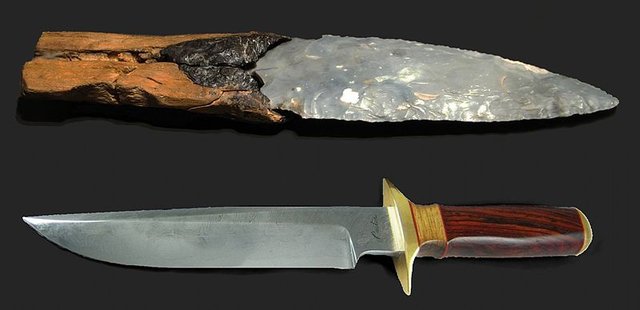

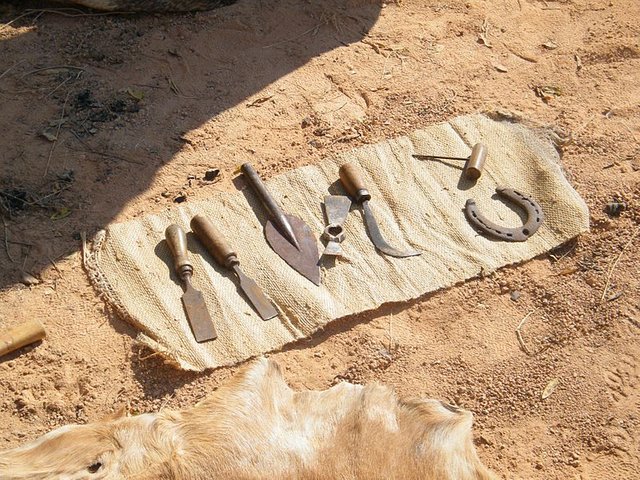
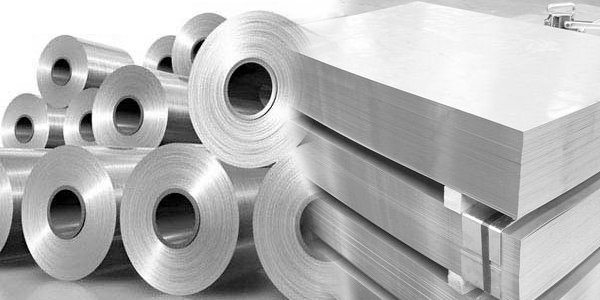

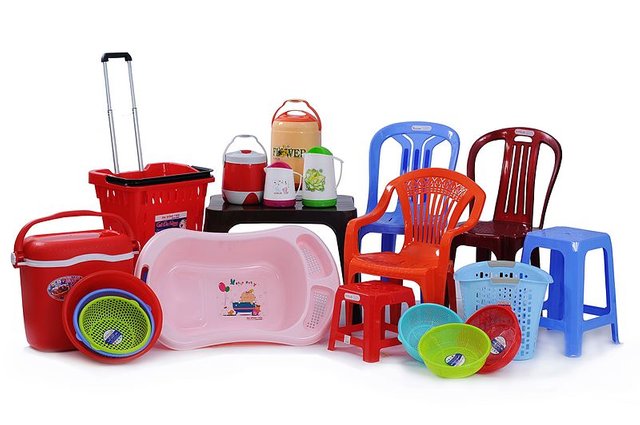
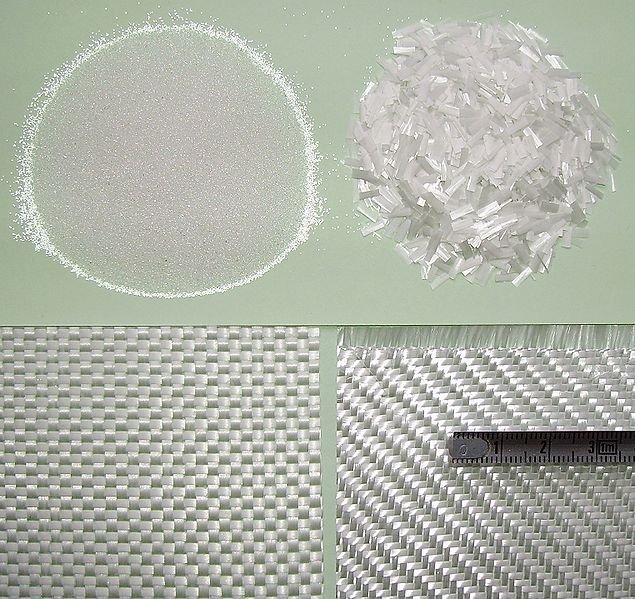
Yea, materials are everywhere. Everything we use is made from one material or the other. I agree with you, the applications are uncountable; it is visible to the blind and even audible to the deaf. One cannot mention it all
Informative post.
Well done
Thanks for affirming the obvious.
Indeed! I concur with the fact that is a very difficult task for a material engineer to distinguish the right selection for a design because so many physical and chemical properties must be tested and checked. what a lovely post you've got here...i like material science but with this your post i now love it. Kudos
Thanks for the kind comment.
It is exciting being a materials engineer, you get to compare and analyze which material will best fit a design. You stripped down materials to its very core, I applaud your ingenuity.
Nice work Mr Temitayo.
The Job of an engineer is not an easy one. Imagine selecting the wrong material for a skyscraper and a bridge.
That's the fun part, the pressure that the lives of so many people depends on you. I mean, u get to play God.
Worth a great responsibility to shoulder.
Only great men achieve great things.
Absolutely.
I agree with you materials are everywhere and our interactions with them without realizing is not good.. The atm card u lost is a material too we should be careful with some stuffs though they might be dangerous materials that can harm us.
And try to be careful with your ATM card next time.
Thanks for dropping by. I will be much careful from now on.
This is another topic which has an all round existence. I love how you used an analogy of your story to deliver the topic...
Nice input
Yeah, material is everywhere. Thanks for the kind words.
Always a pleasure
Good concept..It really pushed my interest reading further..Material is all human existence is based on!
Thanks for the kind words. I hope to always compel my reading to acquire knowledge from my write-up. I'm glad you enjoyed it.
Hello! I find your post valuable for the wafrica community! Thanks for the great post! @wafrica is now following you! ALWAYs follow @wafrica and use the wafrica tag!
Whoa! Really in depth and long. I did pause a little and had to work in the garden and then I returned to read the rest. Very nice and I also have a lot of information about history. I actually chose history as a test vs sports test, even though I was fit :D
I would like to read more about neolitic humans and their way of life. I will probably write about that next, as a series. I still have a lot to cover :D
Thanks for always checking on my progress. It will be nice to have you share your in-depth knowledge of the history of ancient humans.
I am really thinking about it. Soon :D
Yes yes...materials are everywhere, we cant do without them that is why they are known as materials.
You really got me with this, what a cool explanation!
Thanks for the your sincere comments.